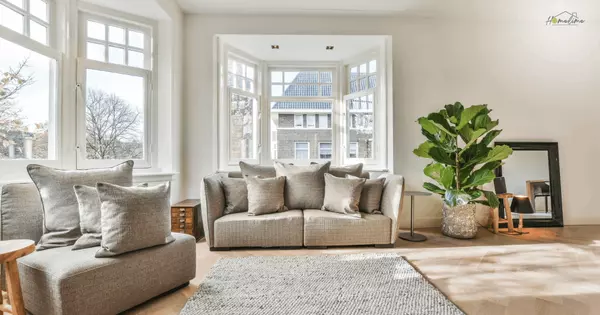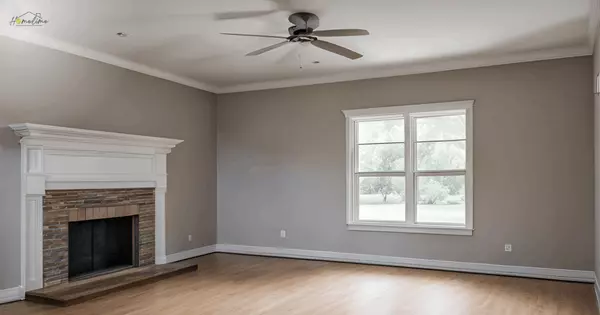
What Gives a Homebuyer Negotiating Power?
In the world of real estate, negotiating power is crucial for homebuyers looking to secure the best possible deal. Whether it’s a lower price, favorable terms, or closing costs, a strong negotiating position can make a big difference. But what exactly gives a homebuyer negotiating power? This blog will explore the factors that can help homebuyers gain an advantage and how to use them effectively. UNDERSTANDING MARKET CONDITIONS Market conditions play a major role in determining a buyer’s negotiating power. In a buyer’s market, there are more homes available than there are buyers, meaning sellers may be more open to negotiating on price or other terms. This environment creates more opportunities for buyers to make offers below asking price, ask for concessions, or include contingencies. On the other hand, in a seller’s market with limited inventory and high demand, buyers have less negotiating power. In this case, buyers may need to adjust their expectations and focus on finding other ways to strengthen their offer, like being flexible on closing dates or pre-approving their financing. BEING PRE-APPROVED FOR A MORTGAGE A mortgage pre-approval shows that a buyer is financially qualified and ready to move forward with a purchase, giving sellers confidence in the buyer’s ability to close. Being pre-approved can give a buyer a stronger negotiating position because: It demonstrates seriousness: Sellers prefer buyers who are financially ready, as it reduces the risk of the deal falling through. It allows for faster closing: Pre-approved buyers can usually close faster, which is appealing to sellers who may be looking for a quick sale. It can lead to better terms: Knowing they’re dealing with a prepared buyer, sellers might be more open to negotiating on price, repairs, or other contingencies. HAVING A LARGER DOWN PAYMENT A larger down payment is another factor that can increase a buyer’s negotiating power. Buyers who can put down more money are often seen as lower risk by sellers and lenders. Here’s how it can benefit the buyer: More attractive to sellers: A larger down payment reduces the risk of financing issues, which reassures the seller that the buyer is less likely to back out due to financing problems. Room for potential price negotiation: With a strong financial position, buyers may have the leverage to negotiate a better price or ask for concessions, such as repair credits or covering closing costs. Flexibility with lenders: Higher down payments may also improve the buyer’s financing terms, which can benefit the buyer financially in the long run. FLEXIBILITY ON CLOSING DATE Being flexible with the closing date can be a powerful bargaining tool. If a seller needs more time to move out or is on a tight deadline, a buyer who can accommodate their schedule may be able to negotiate a lower price or additional concessions in return. For example: In a quick-sale scenario: If the seller needs to sell fast, offering a quick closing date can give the buyer an edge. If the seller needs more time: Buyers who allow the seller to remain in the home for a period after closing can make their offer more appealing. By understanding the seller’s timeline, buyers can tailor their offer to meet the seller’s needs, which may improve their negotiating position. KNOWLEDGE OF THE HOME’S HISTORY AND CONDITION Researching the property and its history can give buyers a strong edge in negotiations. If a home has been on the market for a long time or has gone through multiple price reductions, it may signal that the seller is more willing to negotiate. Similarly, buyers can use any known issues with the home as leverage. Here’s how this knowledge can be advantageous: Longer days on the market: Homes that sit on the market for extended periods may indicate a motivated seller who is open to negotiating. Property condition: Noting any repairs, updates, or potential issues found during the inspection can give buyers a basis for negotiating a lower price or requesting repairs. Comparable properties: Knowing what similar homes in the area are selling for can help buyers justify a lower offer if the home is overpriced relative to the market. MAKING A CASH OFFER For buyers who have the means, a cash offer provides significant negotiating power. Cash offers are more attractive to sellers because they eliminate financing contingencies, which means fewer delays and reduced risk of the deal falling through. Sellers often prefer cash offers, even if they’re slightly lower than financed offers, for these reasons: Quicker closing: Cash transactions generally close faster since there’s no waiting for loan approvals or appraisals. Fewer contingencies: Without financing contingencies, cash offers tend to be cleaner, giving sellers peace of mind. Willingness to negotiate: Because of the certainty cash brings, sellers might be more open to negotiating on price or terms. BEING READY TO WALK AWAY Finally, the willingness to walk away from a deal is a subtle yet powerful form of leverage. Buyers who are firm in their budget or specific requirements can sometimes benefit from being prepared to leave the negotiating table if their needs aren’t met. Shows resolve: Buyers who are prepared to walk away demonstrate to the seller that they’re serious about their requirements and won’t overpay. Strengthens the buyer’s position: If the seller senses that the buyer has other options, they may be more willing to negotiate to secure the sale. Avoids emotional decision-making: Walking away helps buyers avoid paying more than they’re comfortable with, which can be especially valuable in competitive markets. Having negotiating power as a homebuyer is about more than just offering a higher price; it’s about positioning yourself as a serious, qualified, and flexible buyer who understands the market. By knowing the current market conditions, securing pre-approval, being flexible with terms, and remaining prepared to walk away, buyers can significantly increase their chances of landing a favorable deal. In any negotiation, it’s essential to stay focused on your priorities and communicate openly with your agent. With the right approach, buyers can use these factors to strengthen their position and make the buying process as advantageous as possible.

Top Tips for Choosing Paint Colors for Your Home
Choosing the right paint colors can transform your home, creating a harmonious environment that reflects your personality. Here’s a deeper look at how to choose colors that work best for your space: Start with a Vision Board Gather inspiration from magazines, online sources, or photos that resonate with you. Group colors and patterns to get a sense of what feels cohesive. This can help you pinpoint a color palette that aligns with your home’s style. Consider Natural and Artificial Light The same color can look very different depending on the lighting in the room. A north-facing room might make colors look cooler, while rooms with lots of natural light can handle deeper tones. Try to observe how colors change in morning, midday, and evening light. Use Color Psychology Colors affect our mood and perception, so choose hues that align with the room’s purpose. Calming colors, such as blues and greens, work well for bedrooms, while bright, energizing tones like yellows and oranges might be ideal for a kitchen or home gym. Coordinate with Existing Elements Take a good look at your furniture, cabinetry, and flooring before picking a wall color. For instance, a gray-toned wall might complement a modern couch, while warm neutrals suit wood furnishings. Sample, Sample, Sample Always apply swatches of color on multiple walls and observe them over a few days to see how they appear under different lighting. Investing in paint samples can save time and money in the long run. Create a Focal Point with Accent Walls If you’re drawn to bold colors but worry about overwhelming the room, consider painting just one wall in a vibrant hue. This not only adds interest but also can make the room feel larger or add warmth without overpowering it. Utilize Neutrals Wisely Neutrals like gray, beige, or soft whites work as great base colors and can help larger rooms feel cohesive. You can introduce pops of color through accent pieces like throw pillows or artwork. Consider Your Home’s Size and Layout Lighter colors can make small rooms appear larger, while darker shades add intimacy to large, open spaces. A small bathroom, for example, might feel more spacious with a pastel color, whereas a dining room could feel cozier with a deep, rich tone. Pay Attention to Undertones The undertone of a color can make it appear cooler or warmer than it might seem in a sample. Testing colors in your space is essential to make sure the undertone works well with your decor. Consult with a Professional Designer If you’re feeling uncertain, a color consultant or interior designer can provide expert insights tailored to your taste, home layout, and goals. This extra guidance is especially useful for selecting complementary hues. Using these tips, you can create a color palette that feels cohesive, stylish, and uniquely suited to your home.

Preparing to Apply for a Home Loan
Preparing to apply for a home loan involves several steps to ensure you present a strong application, get the best interest rates, and improve your chances of approval. Here's a guide to help you get ready: 1. Check and Improve Your Credit Score Obtain Your Credit Report: Get a free copy of your credit report from major credit bureaus (Experian, Equifax, TransUnion). Check for any errors or discrepancies that could negatively impact your score. Improve Your Credit: Pay down credit card balances, avoid opening new credit accounts, and make all payments on time. The higher your credit score, the better interest rates you’re likely to receive. Monitor Your Score: Aim for a credit score of at least 620, though scores above 700 often qualify for more favorable loan terms. 2. Reduce Debt-to-Income Ratio (DTI) Understand DTI: Lenders look at your DTI ratio to determine your ability to manage monthly payments. It’s the percentage of your monthly gross income that goes toward paying debts. Pay Off Debt: Reduce your debt load by paying off or paying down credit cards, student loans, or personal loans. A lower DTI ratio (ideally below 43%) will improve your chances of approval. 3. Save for a Down Payment and Closing Costs Down Payment: Depending on the loan type, you’ll typically need to save 3%-20% of the home’s purchase price. Larger down payments can help you secure lower interest rates and avoid private mortgage insurance (PMI). Closing Costs: Closing costs can range from 2% to 5% of the loan amount. Be prepared to cover these out-of-pocket expenses when finalizing the home purchase. Emergency Fund: Lenders like to see that you have additional savings as a safety net in case of unexpected expenses. 4. Get Pre-approved for a Loan Pre-qualification vs. Pre-approval: Pre-approval is more comprehensive and involves a credit check and financial review by the lender. It provides a more accurate picture of what you can afford and strengthens your position when making an offer. Documents Needed: Prepare documents such as proof of income (pay stubs, tax returns, W-2 forms), bank statements, employment history, and other financial information. 5. Understand Different Loan Types Conventional Loans: Typically require higher credit scores and down payments but often have lower interest rates. FHA Loans: These are insured by the Federal Housing Administration and require lower down payments and credit scores, making them suitable for first-time buyers. VA Loans: Available to eligible veterans and service members, requiring no down payment and no PMI. Adjustable vs. Fixed Rate: Decide if you want an adjustable-rate mortgage (ARM) or a fixed-rate mortgage. Fixed rates stay the same for the life of the loan, while ARMs can vary. 6. Establish a Stable Employment History Employment Consistency: Lenders generally prefer a stable employment history (usually two years or more with the same employer or within the same field). Income Verification: Ensure that your income documentation is up to date and easy to verify. If you’re self-employed, expect to provide additional documentation like tax returns for the past two years. 7. Calculate Your Budget Determine Affordability: Use an online mortgage calculator to estimate monthly payments, including taxes and insurance. Ensure that the mortgage payment, combined with other debts, fits comfortably within your monthly budget. Estimate Additional Costs: Don’t forget to include property taxes, homeowners insurance, and maintenance costs when determining affordability. 8. Avoid Major Financial Changes Avoid New Debt: Don’t open new credit accounts or make large purchases before applying for a mortgage, as it can negatively affect your credit score and DTI ratio. Hold Off on Job Changes: Switching jobs right before or during the application process can make it harder for lenders to assess your stability. Try to avoid changing jobs until after your loan is approved. 9. Gather Necessary Documentation Income Proof: Recent pay stubs, tax returns, and W-2 forms. Bank Statements: At least two months of bank statements to show assets and account history. Debt and Asset Information: Documentation of any outstanding loans, credit card debt, and assets like retirement accounts. ID Verification: Government-issued ID and social security number. 10. Shop Around for Lenders Compare Offers: Different lenders offer different interest rates, fees, and terms. Get multiple quotes to ensure you’re getting the best deal. Negotiate: Don't be afraid to negotiate origination fees or other costs. Even small changes in rates or fees can make a big difference over the life of the loan. Understand Mortgage Terms: Familiarize yourself with terms like interest rate, annual percentage rate (APR), origination fees, and points to make informed comparisons. By following these steps, you can prepare for a smoother mortgage application process and increase your chances of getting favorable terms. The more effort you put into preparation, the more likely you’ll secure the home loan you want at a rate that fits your financial situation.
Recent Posts











